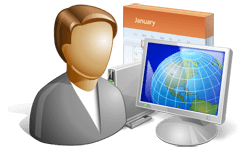Did you get that memo?* You know…the one about putting in place an IT Asset Management (ITAM) solution?
If not, there’s an excellent chance you will, because ITAM is important to nearly all businesses that depend on extensive use of modern software and hardware
If so, do you know why you’re being asked to implement ITAM? Often when people come to me asking for information or pricing, I realize it’s often not clear the purpose of ITAM, and what is the primary business driver.
In my experience, it boils down to three things:
- spending less without sacrificing service quality
- staying compliant
- forecasting the future
 For the CFO
For the CFO
The impetus for instituting a comprehensive ITAM strategy usually comes from two sources:, the IT finance area (read: CFO) and/or the Asset Manager (read: CIO). The end goal for each is the same – to minimize loss and maximize effectiveness, but their perspectives and how they get there are a bit different.
The biggest priority of the IT finance department is to drive down costs. When applied to assets, that means scrutiny on the total cost of ownership. This entails not just the purchase price, but the entire chain of acquisition, use and final disposal. IT finance wants an ITAM solution to address fundamental issues such as:
- What was ordered? Who ordered it and when? From which vendor?
- Did the purchase order agree with the received assets?
- Do the assets include maintenance contracts? Are we overpaying maintenance?
- When and in what manner will the asset be disposed of?
- Are there any assets on our books that we don’t actually have anymore?

The priorities of the CIO are a bit different, with a focus on accuracy of the Configuration Management Database (CMDB), and the status of installed hardware (hardware asset management, or HAM). Examples include:
- Effective forecasting of next year spend
- Knowing the physical location of installed assets for service and planning purposes
- Ensuring disposition is handled in a secure and compliant way
- Tracking upgrades in characteristics such as memory and hard drives
- Tracking maintenance and/or lease agreements to ensure proper coverage without overspending

Ultimately the CIO and CFO want the same thing: To deliver excellent IT service at minimal cost.
To satisfy both, you need accurate data about your IT spend and asset usage. Your ITAM process is therefore about maintaining accurate data about the purchase, usage, service and retirement of IT assets, both hardware and software.
However, to ensure you keep focus on the right priorities, make sure you understand which office(s) the request comes from. All your business justification and planning should be geared towards solving the executives business requirement.
In case you missed it, I did a webinar called Building the Business Case for ITAM that walks you through defining business requirements for ITAM and the metrics used to measure effectiveness of what is implemented. Everything in that webinar is about aligning activities in ITAM to business objectives.
A lot of times ITAM “success” means successfully launching an ITAM software product. That isn’t success in and of itself. You don’t buy a drill because you want a drill. You buy it because you want a hole. Or really, because you want a new deck. And you want that new deck because it gives you quality time with the family.
So, remember, drills give you quality family time.
What do you expect ITAM to give you? Figure that out before you even start.
*It’s just that we’re putting new cover sheets on all the TPS reports before they go out.

Tom Watson is AMI’s President and CEO. He began his career in high tech in 1996, as a software engineer for his own software company. After a subsequent stint at IT Asset Management firm Micropath as senior architect for that company’s asset tracking system, he founded AMI to develop hardware asset tracking technology solutions for enterprise IT Asset Management customers.


